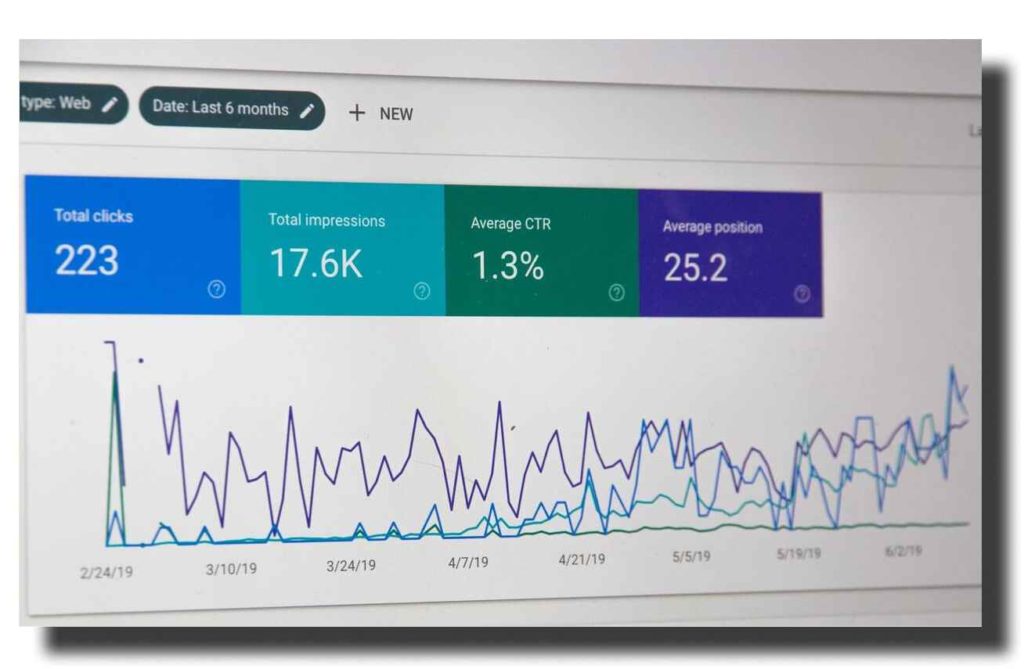The Best Fluffy Pancakes recipe you will fall in love with. Full of tips and tricks to help you make the best pancakes.
Google Remarketing is one of the most powerful advertising tools out there. With it, you can reach new customers who have already visited your website or clicked on one of your ads. In this guide, we’ll teach you everything you need to know about using Google Remarketing in 2022.
Table of Contents
What is remarketing?
Remarketing is a marketing technique that uses data from past interactions with customers to promote products or services to them again.
Remarketing can be used to reach people who have already shown an interest in your products or services. This is done by using the data collected from past interactions to target those customers with ads.
Google remarketing is one of the most effective ways to market products and services online. It allows you to reach a very large audience with minimal effort. Google remarketing also has the ability to track how people are interacting with the ads, which makes it even more effective.
How to set up Google Remarketing?
If you want to increase your online advertising campaign, you should consider using Google Remarketing. Google Remarketing is a great way to target your ads specifically to your customers. Here’s how to set up Google Remarketing:
1. First, you need to create a campaign in AdWords. You can do this by clicking on the “Create Campaign” button in the upper right corner of the AdWords interface.
2. Next, select the ad group that you want to use for your remarketing campaign.
3. Then, choose the “Display Network” option and select “Google Display Network” from the list of networks.
4. Finally, specify which properties you want to use for targeting your ads. You can target people who have visited your website in the past, people who have made a purchase on your website in the past, or people who have responded to one of your ads with a phone call or email.

The different types of remarketing
Google Remarketing is one of the most powerful advertising tools available. It allows you to reach potential customers who have already shown an interest in your products or services. There are three main types of remarketing: retargeting, contextual targeting, and display targeting.
Retargeting is the oldest form of remarketing. This is where Google Ads will show ads to people who have already visited your website but didn’t buy anything. You can target these people based on their browsing history, which includes the pages they’ve visited, the keywords they’ve used, and the ads they’ve clicked on.
Contextual targeting is a newer form of remarketing that allows you to target people based on what they’re doing now. For example, you could target people who are currently viewing your ad campaign, who have recently made a purchase from your website, or who have shown an interest in your product or service on other websites.
Display targeting is the most recent form of remarketing. This is where Google Ads will show ads to people who match specific criteria, such as age, gender, location, and interests. You can also target people who have recently searched for specific keywords or phrases.
How to set up remarketing for your website?
If you’re looking to increase your website’s traffic and conversions, remarketing is a great way to do it. Here’s how to set up Google remarketing for your website:
1. First, create a campaign and select the target audience you want to reach. You can target users who have visited your website in the past, or users who have interacted with one of your ads on Google.
2. Next, create a template for your ads. You’ll need to specify the ad format (display ad, video ad, or text ad) and the budget you want to spend on the campaign.
3. Finally, add your website as a remarketing ad destination and set up your tracking code. You’ll then be able to see how many people click on your ads, as well as how many converts you generate from them.
How to set up remarketing for your ad campaigns?
Remarketing is an important part of any online advertising campaign. It allows you to target your ads specifically to people who have already shown an interest in your product or service.
There are several different ways to set up remarketing for your Google AdWords campaigns. You can use the Remarketing Lists tool or the Ads Settings interface.
To use the Remarketing Lists tool, first create a list of customers who you want to target with your ads. Then, add your desired ads to the list and set the targeting criteria. You can also use this tool to manage your existing ad campaigns.
The Ads Settings interface is also available on the AdWords account management page. This interface lets you specify more detailed targeting information for your ads. For example, you can specify which countries you want to target your ads in, or which age groups you want to target them with.

How to measure the success of your remarketing campaigns?
One of the key factors to measuring the success of your remarketing campaigns is understanding how effective they are. To do this, you need to measure two things: first, how many people clicked on one of your ads after seeing it on Google; and second, how likely those people were to buy something based on that ad.
There are a number of different methods you can use to measure these things. One popular approach is conversion rate optimization (CRO), which measures how many people who see your ad convert into customers. This can be done using a variety of different tracking tools, such as Google Analytics or Clicky.
Another way to measure the success of your remarketing campaigns is by looking at lift. This measures the difference between the response to your ads and the response from ads that don’t have any links to your product or website. Lift can be measured using a number of different tools, such as Hashtagify or CrazyEgg.
Once you’ve measured the success of your remarketing campaigns, you can use that information to improve them in future iterations. By knowing exactly how well your campaigns are performing, you can make sure that you’re targeting the right audience and driving conversions for your business.
What are the benefits of remarketing?
One of the benefits of Google Remarketing is that it can help you to reach new customers. When you run a remarketing campaign, you are displaying your ads to people who have already visited your website or contacted you through email. This means that you can target your ads specifically to those who are interested in your product or service.
Remarketing also allows you to retarget people who have already shown interest in your products or services. This means that you can continue to reach them with your ads even after they have left your website or stopped contacting you. This is an effective way to increase sales and build brand loyalty.
Google Remarketing is one of the most powerful marketing tools available online. It can help you to reach new customers and keep them engaged with your products and services.

Conclusion
Google Remarketing is one of the most powerful advertising tools out there, and in this ultimate guide, we’ll teach you everything you need to know about how it works and how to use it to your advantage. Whether you are a small business owner who wants to increase website traffic and conversion rates, or an advertising agency that wants to create more effective campaigns, Google Remarketing is essential. So if you want to learn how to get the most out of Google AdWords (and all the other advertising platforms), this guide is for you!